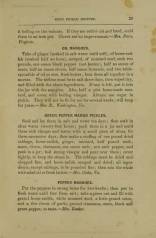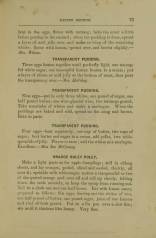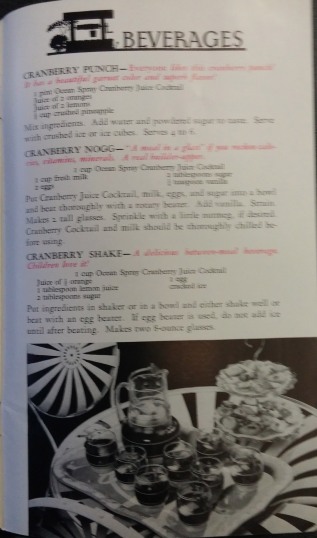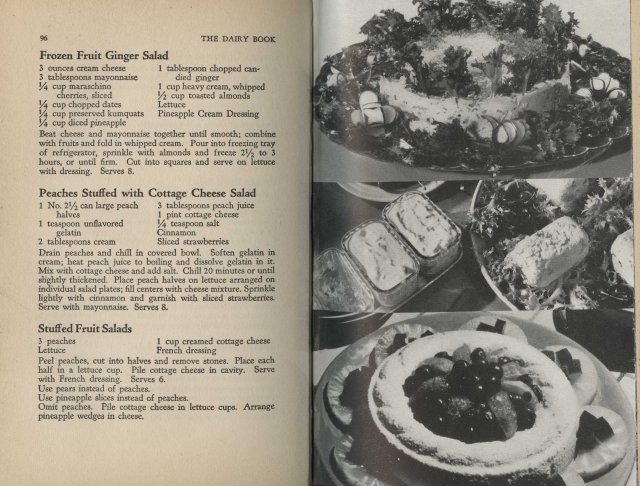Housekeeping in the Blue Grass: A New and Practical Cook Book Containing Nearly a Thousand Recipes was originally published in 1875. The copy is one of the 10th “new and enlarged” edition, first issued in 1879, but our actual copy is from 1881. Compiled and edited by the Ladies of the Presbyterian Church in Paris, Kentucky, these 206 pages are packed with recipes from women (and a few men) from mostly Kentucky, but also Virginia, Arkansas, New York, Pennsylvania, and Ohio.
Our edition includes the original 1875 preface, which we can’t NOT quote a bit of for you:
The “Blue Grass” region of Kentucky, as is well know, is considered the garden spot of the State. It is celebrated for the fertility of its soil, the beauty of its pastures, its flocks and blooded stock, and last, but not least, for the hospitality of its people and their table luxuries.
It is useless to enlarge upon the last feature, especially to those who have attended Bourbon Fairs [that’s the county, not the whiskey], and made visits in this and the adjoining counties. We only refer to it, by way of introducing our book to the appreciation of the public.
The 1879 also had a preface of its own, which states, in part:
…Nine thousand copies have been sold, and its praises have been sung by many of the best housekeepers of the land.
In sending forth this new edition, we have corrected some errors, supplied defects, and added many valuable recipes, which will be found at the close of each section and in the Miscellaneous department.
The entire profits of this work have been, and will continue to be, devoted to religious charity.
Housekeeping in the Blue Grass was, at its core, a community cookbook, designed to raise funds for a cause. But the fact that it went on into at least 10 editions and over 9,000 copies sold says a lot for this little volume. (There was at least one more edition in 1905 AND it has been reprinted at least once in the last 10 years.) It clearly appealed to a wide audience (not just Kentuckians!) in its originality. (The preface also states that “Many of our recipes are entirely original with our own famed cooks; others have been gathered from the most reliable sources; not one, so far as we know, has been copied from books.”) So, what are these amazing recipes?
Housekeeping in the Blue Grass has elements we see in many other cookbooks of the time: sections for home remedies, home cleaning/upkeep, and cooking for invalids, in addition to all the other recipes. Of course, it also reflects a different era of cooking. The majority of the recipes have a list of ingredients in non-standard amounts (standardized measurements, courtesy of Fannie Farmer, were still several years in the future in 1881) and, in some cases, additional directions, but there was still an assumption that a reader would know what to do with those ingredients. Or, they would at least understand the basics of producing a pudding, a white sauce, or a pastry dough as a component. Compared to many modern cookbooks, there was a different set of expectations on home cooks in the late 19th century! Some of the basics may be covered in the book (Housekeeping in the Blue Grass has recipes for pie crust that you could use throughout, for example), but there’s no guarantee.
Community cookbooks were aptly named, especially in their early days–they weren’t just something produced by a community group (often of women). They were produced by a community of cooks, for a community of new and experienced cooks, and to help build community between those who had the knowledge and those who might have needed some culinary and domestic education. That’s a whole other topic we don’t have space for here today, but it is food for thought (at least it has been for me lately).
Housekeeping in the Blue Grass is available online, as it was scanned by Special Collections staff some years ago. So, if our amuse-bouche (I love that word!) of a blog post isn’t enough for you, you can delve further into the book and find recipes for deviled turkey, Sally Lunn, or fish pie…





![TX715.H834_1881_4 These "Walnut Pickles" include a quite precise direction that they should be "gather[ed]...about the 10th of June, when you can stick a pin through them"](https://whatscookinvt.files.wordpress.com/2017/05/tx715-h834_1881_4.jpg?w=156&resize=156%2C238&h=238#038;h=238)

























































































